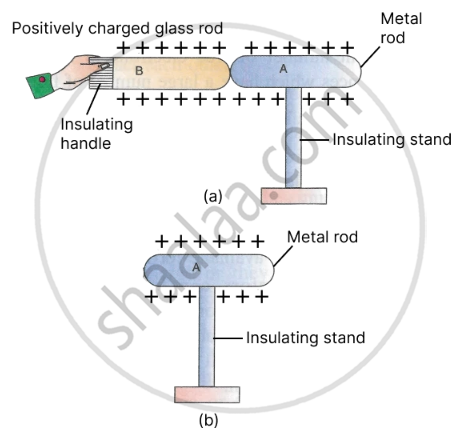Advertisements
Advertisements
Question
Explain the charging by conduction in terms of movement of electrons.
Solution

Suppose we want to positively charge a metal rod A. Place it on an insulating stand and touch it with a positively charged glass rod B. The rod A gets positively charged.
Explanation in terms of movement of electrons - The glass rod B is positively charged so it has a deficiency of electrons. When it is touched with the metal rod A, the free electrons of rod A move to the glass rod B. Due to loss of electrons in the rod A, it becomes positively charged.
APPEARS IN
RELATED QUESTIONS
Match the following
| Column A | Column B |
| Electric power | volt |
| kWh | joule |
| Electric current | volt × ampere |
| Electric energy | watt |
| watt | ampere |
| potential difference | electrical energy |
If the charge is not in motion, we call it static electricity.
Human body is a conductor of electricity.
Describe an experiment to demonstrate that there are two r kinds of charges.
An ebonite rod rubbed with fur is suspended near another ebonite rod rubbed with fur. State your observation and give a reason to support your answer.
What do you mean by conservation of charges?
Describe the method of charging a conductor by conduction.
Explain the charging by induction in terms of movement of electrons.
How will you use a gold leaf electroscope to find out whether the charge on a charged body is positive or negative?
How is a tall building protected from damage due to lightning?
